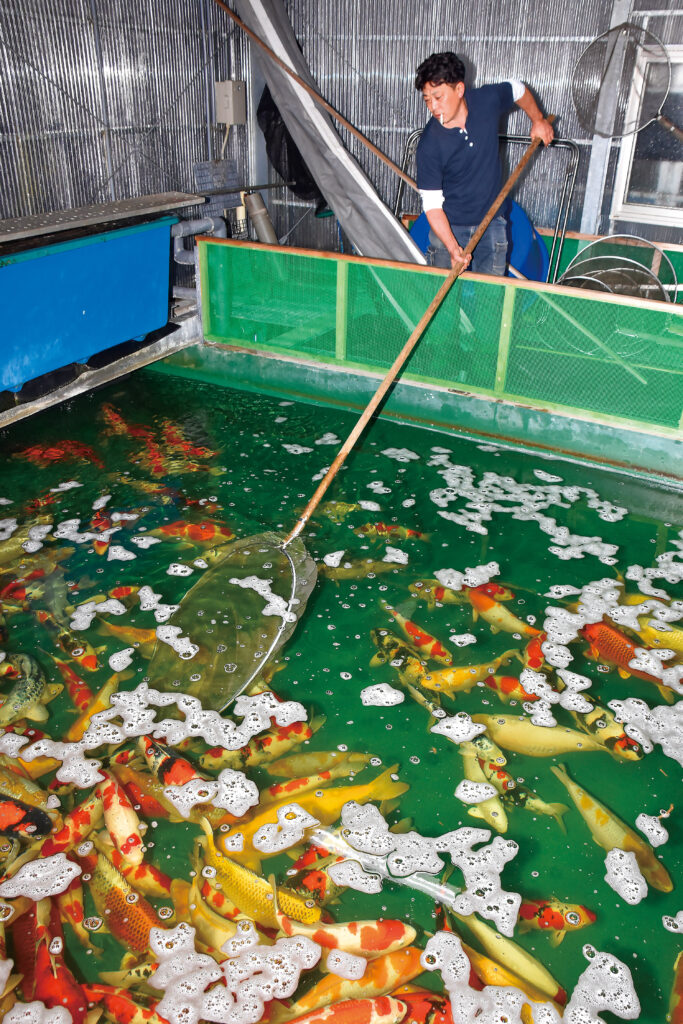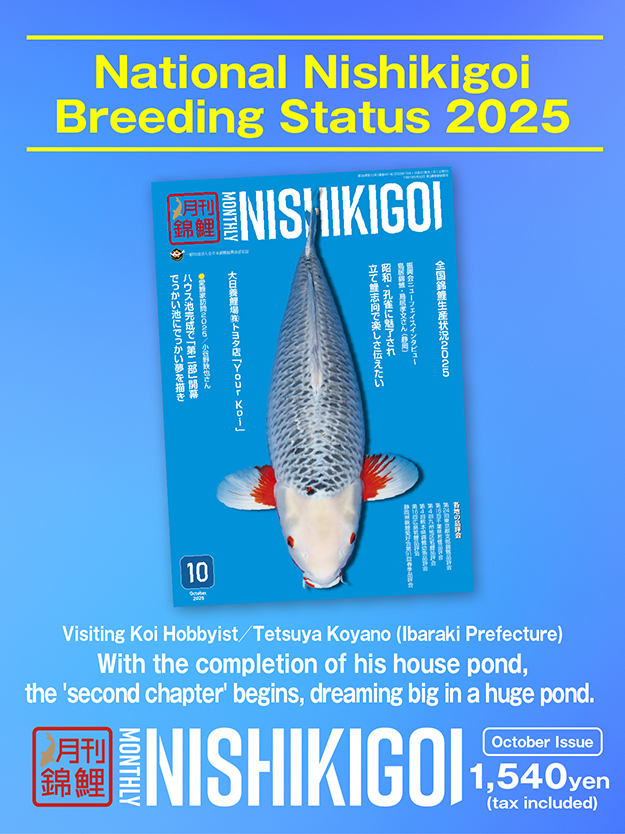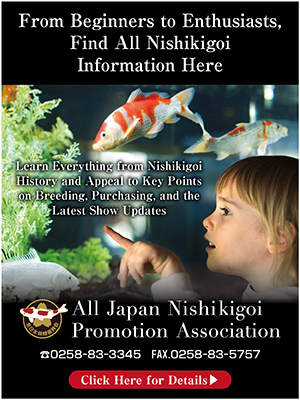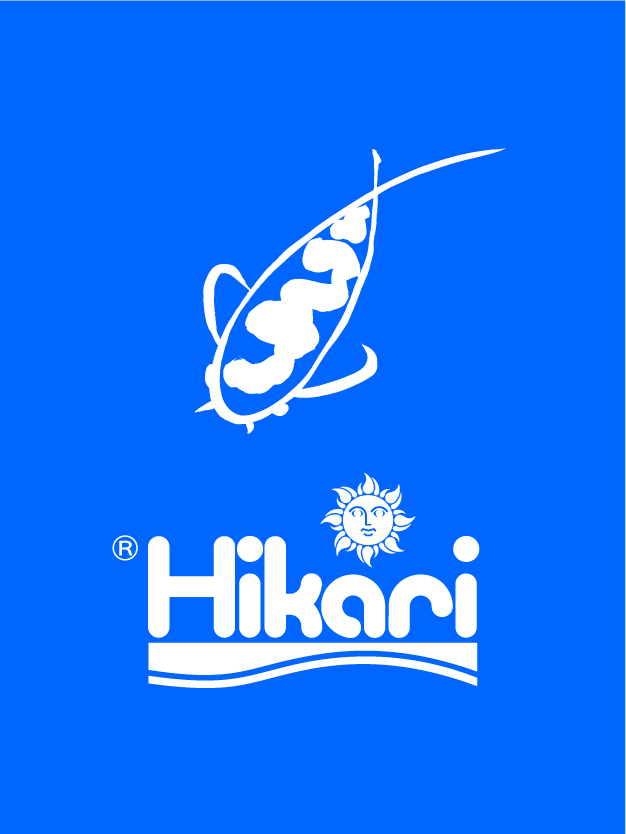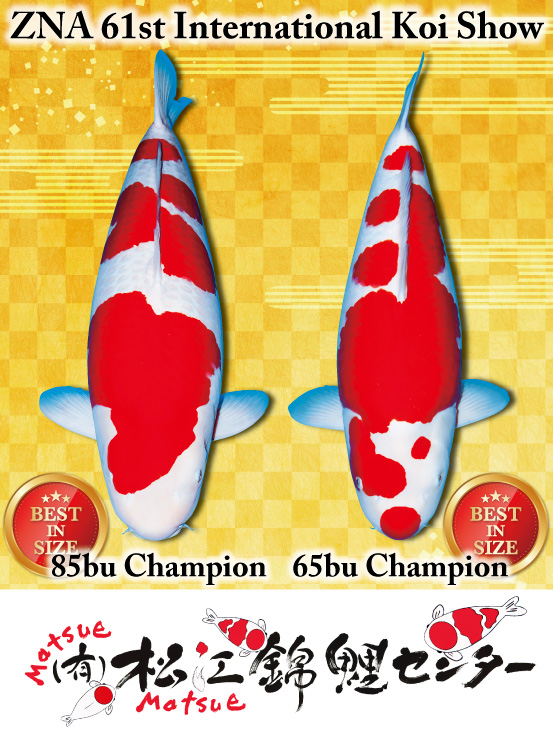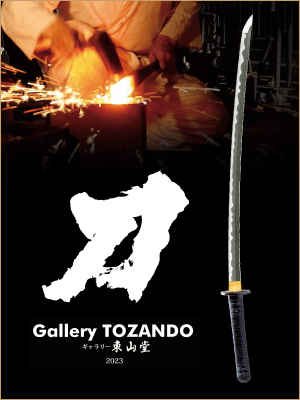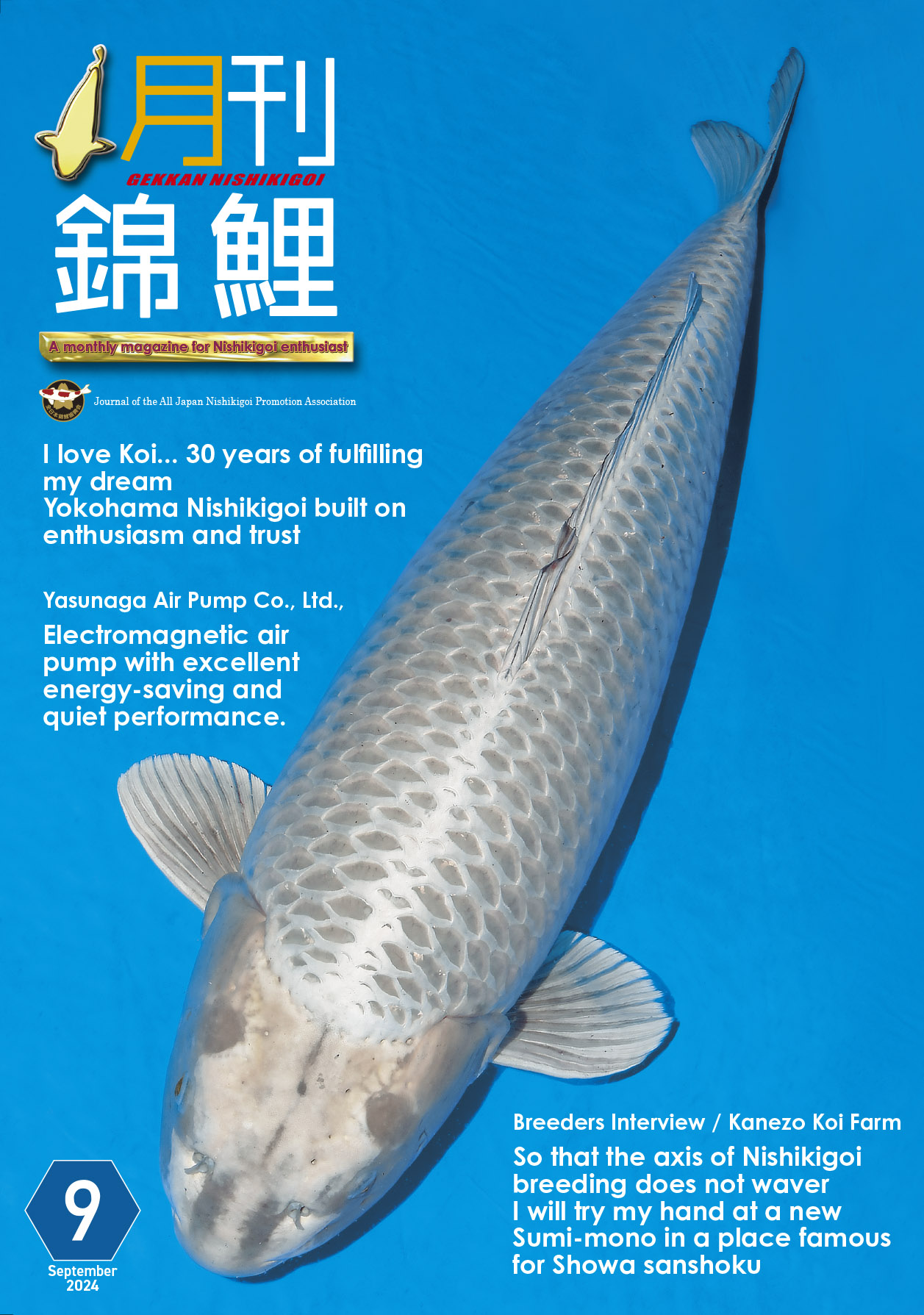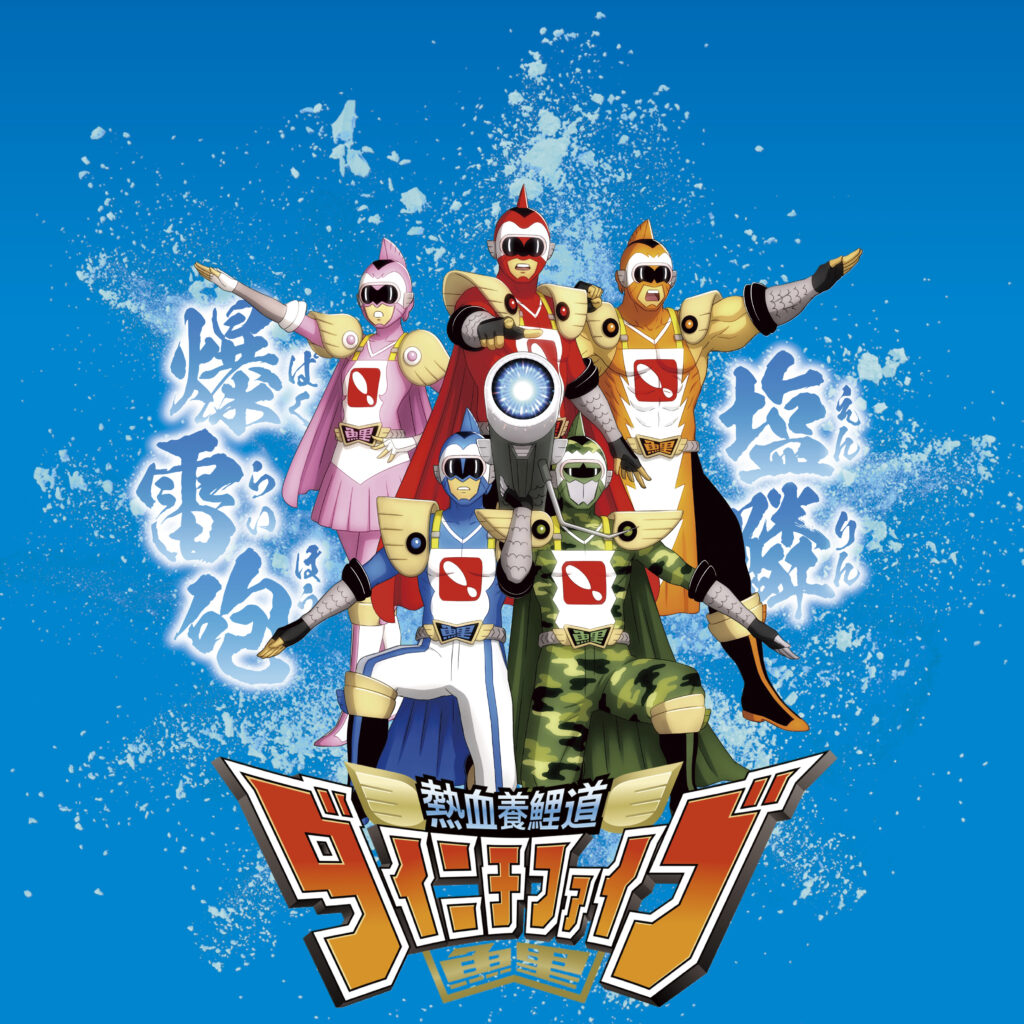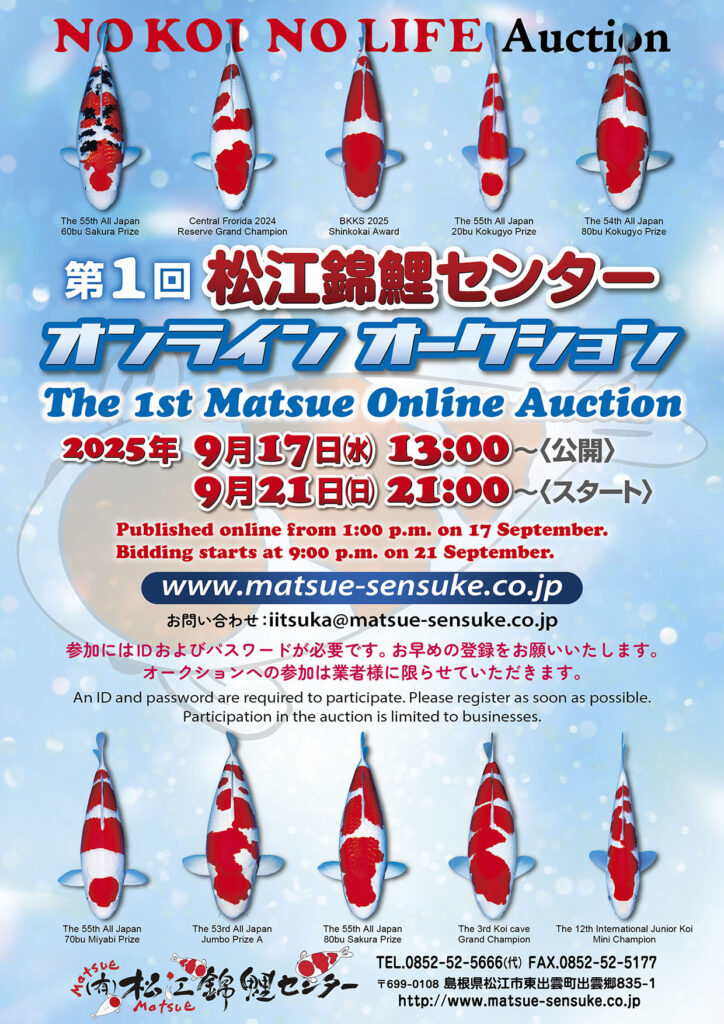— Why intentionally cross with orange-coloured ones?
Toshinobu: I’m not sure why it happens, but for example, when trying to breed Showa by crossing it with a different variety in an outcross, even if the first generation produces beautiful Showa, those traits often don’t carry over to the next generation when bred further. So, if you take koi that have inherited motoguro or Showa traits but appear imperfect and use them as parents again, then cross them with Showa, you can often produce proper Showa more reliably. Also, to create yellow koi without losing the Goshiki characteristics, I need to select from those that already show Goshiki traits. Additionally, koi with more potent orange tend to bring out the Goshiki base. Even among Tamausagi with an orange hue and strong indigo hue base, some can be preserved as new Goshiki bloodlines. Additionally, I keep them for two purposes: as parent fish for backcrossing yellow Goshiki and for reintroducing Goshiki blood into the lineage.
— By maintaining bloodlines that are neither too distant nor too closely related, you can always cross them when needed.
Toshinobu: For example, let’s say a group of koi with red eyes and a pale lemon colour emerges, but the indigo hue base isn’t clearly defined, and there are no red spots or speckled sumi. In this case, to enhance the “colour,” it would be necessary to reintroduce the bloodline. However, if I go back to the original Goshiki bloodline, Goshiki traits would be too strongly reinforced, bringing back too many of Goshiki characteristics. There’s a difference in which koi would produce better results when crossed.
If you have a koi that carries 50% yellow pattern genes and 50% Goshiki genes but is more Goshiki-dominant, and then a koi with 100% Goshiki genes, it’s better to cross with the one that carries 50% yellow and 50% Goshiki genes rather than going back to the 100% Goshiki. This way, the body shape won’t become undesirable. For that reason, even koi with in-between colours, which have a Goshiki-like appearance, need to be crossed back into the Goshiki line.
— Having multiple bloodlines to work with is essential to make progress with improvements.
Toshinobu: I’ve tried creating various combinations in the past, but after all, it’s easier to get the next generation to come out crossing return with koi that have Goshiki traits rather than crossing the koi has 100% gene. Selecting the koi that will grow the biggest during the first selection is quite challenging, especially with yellow koi, as their patterns are not visible. It relies heavily on intuition. If the yellow is more prominent, it indicates a stronger influence from the Goshiki bloodlines, decreasing the rate of them growing bigger. However, since the standards can only be set based on that, the colour and patterns might be better if someone else makes them, but the size and overall outcome will differ. So, I need to select from a different perspective. But as long as I’m enjoying it myself, that’s fine; I’ll just continue making what I want to make (laughs).
— I’m looking forward to the next Kawarigoi (laughs).
Toshinobu: With Konishi’s Doitsu Karashi koi, I could only breed for one year, but the offspring from that generation have now become the parent koi, so I’m thinking about how to use them moving forward.
— I look forward to following the future developments of Tamausagi. Thank you for your time.
(Interviewed on 23rd December, 2024)
